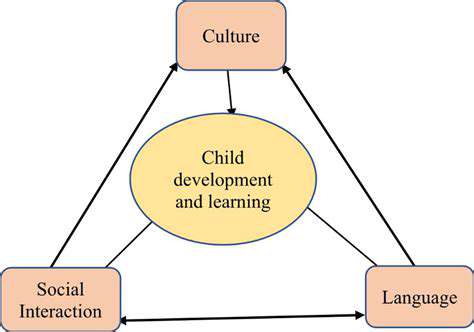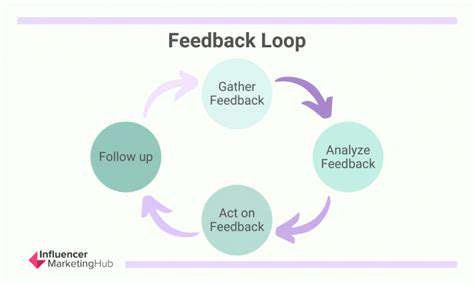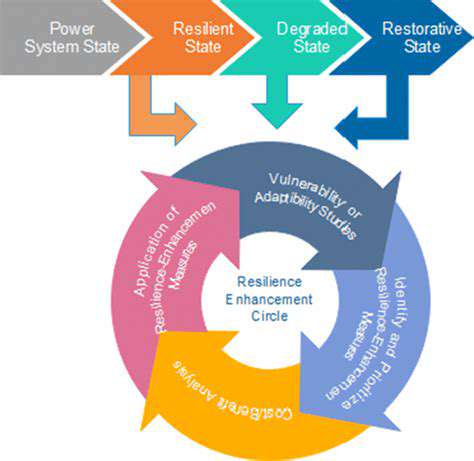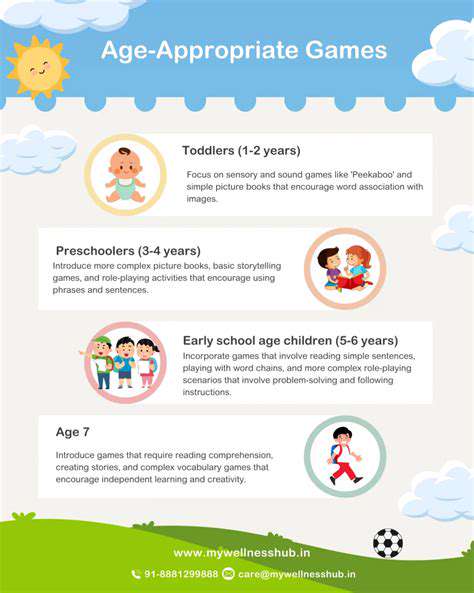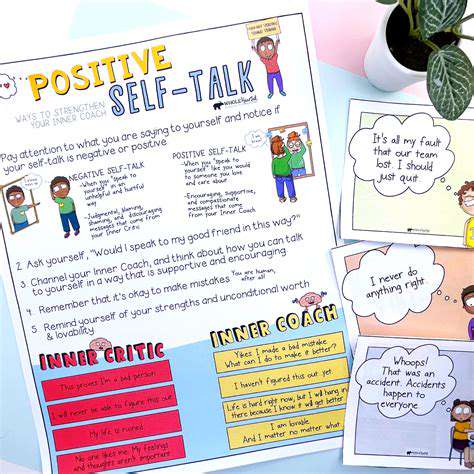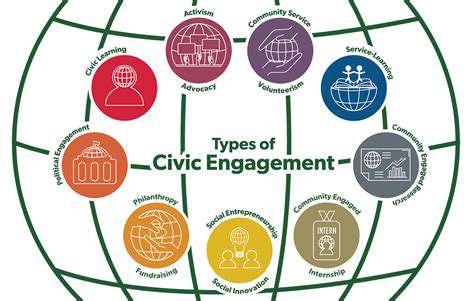Sleep Regressions: Understanding and Overcoming Challenges
Common Triggers for Sleep Regressions

Common Environmental Factors
Environmental factors can significantly impact sleep, and understanding these triggers is crucial for addressing sleep regressions. Changes in routine, such as a move to a new home or a change in childcare arrangements, can disrupt a child's sleep patterns. The introduction of new siblings or pets can also be a major stressor, leading to anxiety and difficulty falling asleep or staying asleep. A child's bedroom environment plays a vital role too. A dimly lit, quiet, and cool room promotes sleep, while a noisy, bright, or overly warm space can interfere with sleep cycles. Noise pollution from traffic or neighbors, and even light from streetlights or electronic devices, can make it challenging for a child to drift off.
Another key environmental factor is temperature. A bedroom that's too hot or too cold can disrupt sleep. Maintaining a comfortable temperature is essential for a good night's rest. Furthermore, consistent bedtime routines and a calming bedtime atmosphere can greatly contribute to a child's sleep quality. This could include a warm bath, a story, or a quiet playtime activity to help wind down before bed.
Developmental Milestones and Stress
Developmental milestones can also be significant triggers for sleep regressions. As children grow and develop, they experience various changes in their cognitive and emotional capabilities, which might affect their sleep patterns. This is especially true when they are exploring new skills, learning new things, or facing new challenges. These challenges can trigger anxiety and stress, both of which can interfere with sleep.
Experiences of stress, whether big or small, can impact a child's ability to relax and fall asleep. This stress might stem from various sources, including school-related pressures, social interactions, or even changes in the family dynamic. Recognizing these stressors is important to support the child and address the underlying issues to help them regain their sleep.
Furthermore, the introduction of new skills or environments, such as starting preschool or kindergarten, can lead to increased anxiety and sleep disturbances. These new experiences require adaptation, which can be challenging for some children. It's essential to provide a supportive and understanding environment to help the child navigate these transitions smoothly.
Changes in the child's daily routine, whether it's a change in school hours, a new extracurricular activity, or the addition of new responsibilities, can also cause sleep regressions.
Recognizing the impact of these developmental factors is vital for parents and caregivers, allowing them to offer the necessary support and guidance for better sleep.
Addressing these potential sources of stress can be crucial in helping children adjust and maintain healthy sleep patterns.
Recognizing the Stages and Patterns
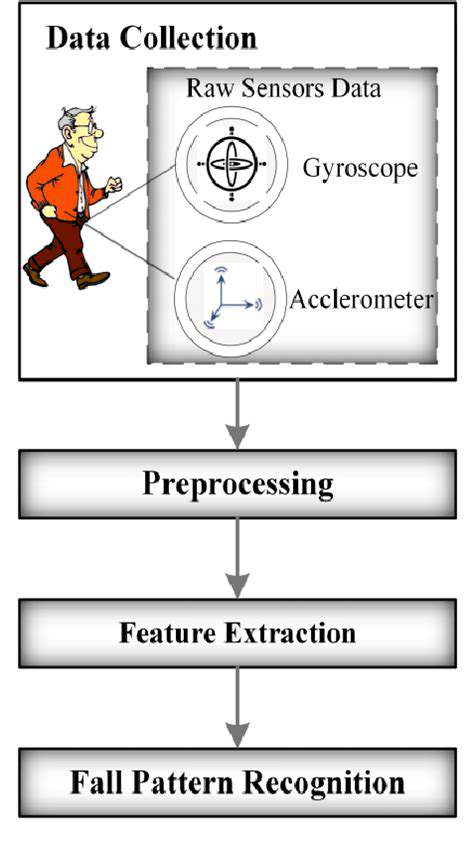
Understanding the Initial Phase
The initial phase of any process or project is crucial for laying a strong foundation. This stage often involves meticulous planning and research, setting the stage for future success or failure. Careful consideration of potential challenges and developing contingency plans during this initial phase can significantly mitigate risks later on. Understanding the initial conditions, identifying key stakeholders, and defining clear objectives are fundamental to a successful outcome.
Identifying the Growth Stage
The growth stage is characterized by increasing activity and output. This is a period of expansion and innovation, where the focus shifts from establishing a foundation to scaling operations and exploring new opportunities. It's essential to adapt strategies and processes to accommodate the growing demands and complexities of this phase. This stage is often marked by rapid growth in team size, resources, and project scope. Sustaining momentum and maintaining quality control are key priorities during this period.
Recognizing the Maturity Phase
The maturity phase represents a period of stability and optimization. At this point, processes are well-defined, systems are robust, and the focus is on maintaining efficiency and maximizing output. This is an opportunity to refine procedures and identify areas for further improvement, leading to increased productivity and reduced costs. Continuous monitoring and adjustments are essential to maintain the gains achieved during this phase. Regular performance evaluations and identifying areas for enhancement are important.
Analyzing the Decline Stage
The decline stage is a period of transition, often marked by decreased activity and output. This stage may be triggered by external factors like competition or changing market conditions, or internal factors like a lack of innovation or poor management. It's crucial to recognize the signs of decline early on to implement strategies to mitigate the negative impact and initiate a revival. This often involves strategic restructuring, cost-cutting measures, and exploring new revenue streams to revitalize the process or project. Recognizing the causes and proactively addressing them are important.
Understanding the Cyclical Pattern
These stages often repeat in a cyclical pattern. Understanding this cyclical nature is vital for long-term success. Each cycle offers opportunities for learning and improvement, allowing for refinement and adaptation of strategies and processes. By recognizing the recurring patterns, organizations can anticipate challenges and prepare for the next growth stage. This cyclical understanding allows for proactive problem-solving, and adaptation to changing market conditions or internal dynamics.
Strategies for Managing Sleep Regressions
Understanding Sleep Regressions
Sleep regressions are periods of sleep disruption that occur during a child's development. These aren't simply tantrums or bad nights; they represent a natural stage where a child's brain and body are adjusting to new milestones and experiences. Understanding that these regressions are normal and temporary is crucial for parents to maintain a healthy perspective and avoid unnecessary stress and anxiety. They can be triggered by a variety of factors, from physical growth spurts to developmental leaps, and even changes in routine or environment.
Recognizing the patterns and potential triggers associated with sleep regressions can empower parents to anticipate these challenges and implement appropriate strategies for support and reassurance. This proactive approach can help mitigate the impact of sleep regressions and maintain a positive and consistent sleep routine for the child.
Identifying the Signs of a Sleep Regression
Recognizing the signs of a sleep regression is the first step towards effectively managing it. Look for subtle changes in your child's sleep patterns, such as increased nighttime awakenings, longer wake times, or resistance to bedtime routines. These changes can manifest in different ways, and it's essential to pay attention to subtle shifts rather than just focusing on dramatic alterations.
Changes in feeding patterns, increased fussiness, or unusual clinginess during the day can also be indicators of a developing sleep regression. By meticulously tracking these changes, parents can gain valuable insights into their child's evolving needs and adapt their approach accordingly. Early recognition allows for timely intervention and helps maintain a smooth transition through this developmental phase.
Creating a Consistent Sleep Routine
Establishing a consistent sleep routine is paramount for managing sleep regressions. A predictable bedtime routine provides a sense of security and helps regulate your child's internal clock. This routine should include calming activities like a warm bath, reading a book, or gentle rocking. Consistency in these activities signals to your child that it's time to wind down and prepare for sleep, fostering a sense of security and predictability.
Responding to Nighttime Awakenings
Responding appropriately to nighttime awakenings is a critical aspect of managing sleep regressions. Avoid rushing to your child's bedside immediately. Instead, check in, offer reassurance, and address any immediate needs without excessive interaction. A soothing presence without unnecessary stimulation can help your child return to sleep more easily.
Responding to the needs without excessive interaction helps your child develop a sense of security and trust in their ability to self-soothe, which is crucial for healthy sleep patterns in the long run. This approach reduces the likelihood of establishing a cycle of dependence on your presence for sleep.
Seeking Professional Guidance
If sleep regressions persist or significantly impact your family's well-being, seeking professional guidance from a pediatrician or sleep consultant can be beneficial. They can provide personalized advice and support tailored to your child's specific needs. A professional assessment can help identify underlying issues and ensure you're implementing the most effective strategies.
A consultation with a sleep specialist can provide insights into potential underlying medical conditions or developmental factors that might be contributing to the sleep regression. This expert guidance can empower you with the knowledge and tools to navigate this challenging period effectively and support your child's healthy development.

